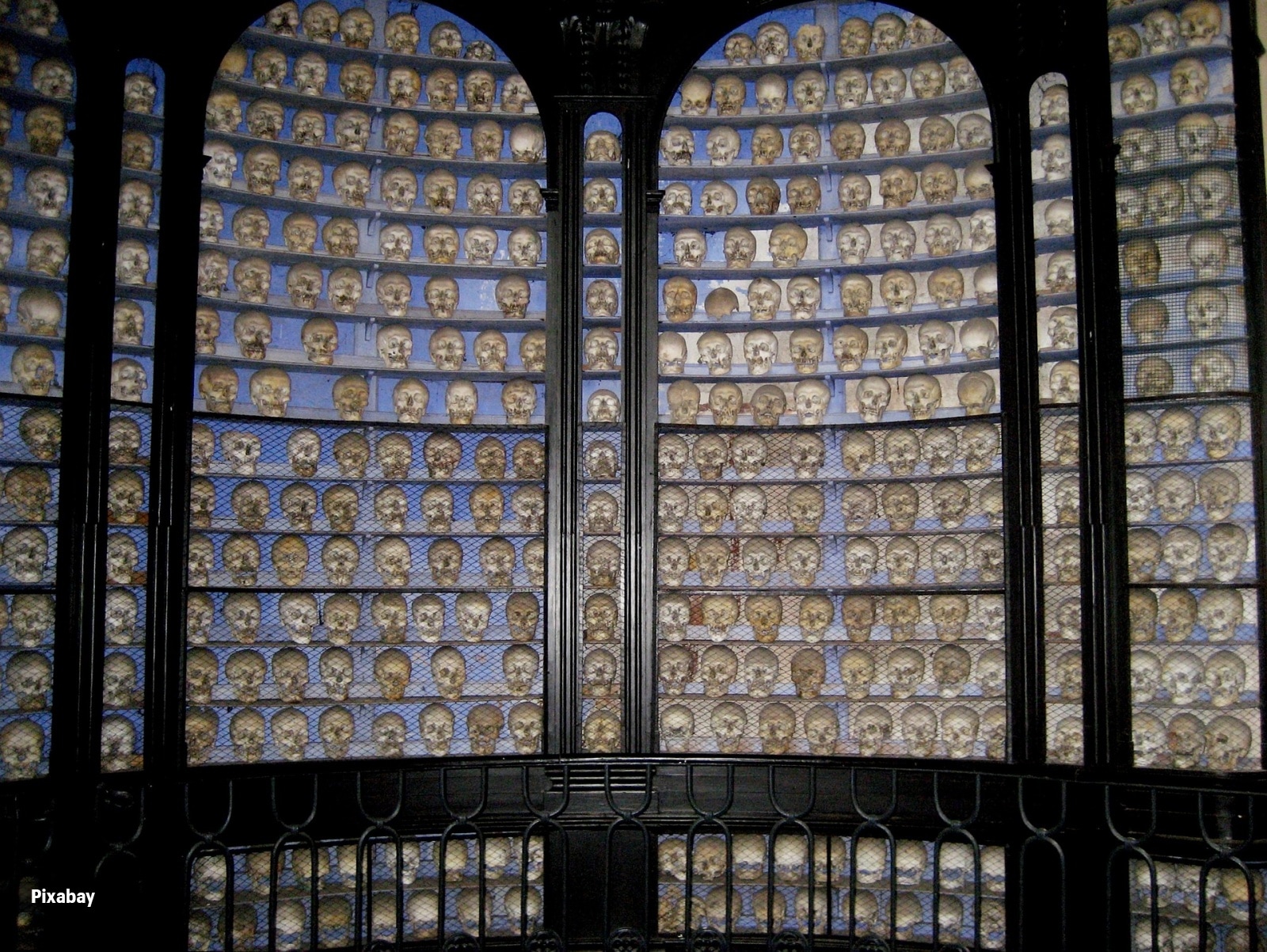📣 For more lifestyle news, click here to join our WhatsApp Channel and also follow us on Instagram
This church in Czech Republic is made of around 40,000 bones
Today, the Church draws over 200,000 visitors a year, standing as a reminder that beauty and mortality often coexist.
 The chapel’s interiors in Sedlec Ossuaryare crafted entirely from human bones
The chapel’s interiors in Sedlec Ossuaryare crafted entirely from human bonesJust an hour from Prague, in the quiet Czech town of Kutná Hora, stands one of the world’s most hauntingly beautiful monuments — the Sedlec Ossuary, more famously known as the Church of Bones. From the outside, it looks like any modest Gothic chapel. But once you step inside, you’re met with something truly extraordinary: the bones of over 40,000 people arranged into breathtaking works of art.
The origins of this chilling yet captivating chapel trace back to the 13th century, when a Cistercian abbot returned from a pilgrimage to Jerusalem. He brought back a handful of soil from Golgotha — the site believed to be where Jesus was crucified — and scattered it across the Sedlec cemetery. Word spread quickly, and the graveyard became one of the most sought-after burial sites in Central Europe.
But when the Black Death swept across Europe in the 14th century, followed by the Hussite Wars, the small cemetery overflowed. Thousands of bodies were exhumed and stored in the chapel’s basement, leaving monks with a delicate problem: what to do with the remains.
 The bone decorations of the church were created by woodcarver František Rint in 1870 (photo: pixabay)
The bone decorations of the church were created by woodcarver František Rint in 1870 (photo: pixabay)
Centuries later, in 1870, a woodcarver named František Rint was hired to give the bones order. What he created was nothing short of astounding — a chandelier made from every bone in the human body, garlands of skulls lining the vaults, and even a coat of arms crafted entirely from bones. Rather than a scene of horror, the result is solemn, artistic, and strangely serene.
Visitors describe the ossuary as peaceful rather than macabre—a place that invites reflection on life, death, and what connects us all. The soft light filtering through stained glass, the quiet air, and the silent gaze of thousands of skulls combine to create an atmosphere at once eerie and spiritual.
Today, the Church of Bones draws over 200,000 visitors a year, standing as a reminder that beauty and mortality often coexist. Amid its silent displays, one can’t help but feel that the chapel isn’t about death at all — it’s about remembrance, reverence, and the art of finding grace in what remains.
📣 For more lifestyle news, click here to join our WhatsApp Channel and also follow us on Instagram






- 01
- 02
- 03
- 04
- 05





















